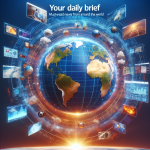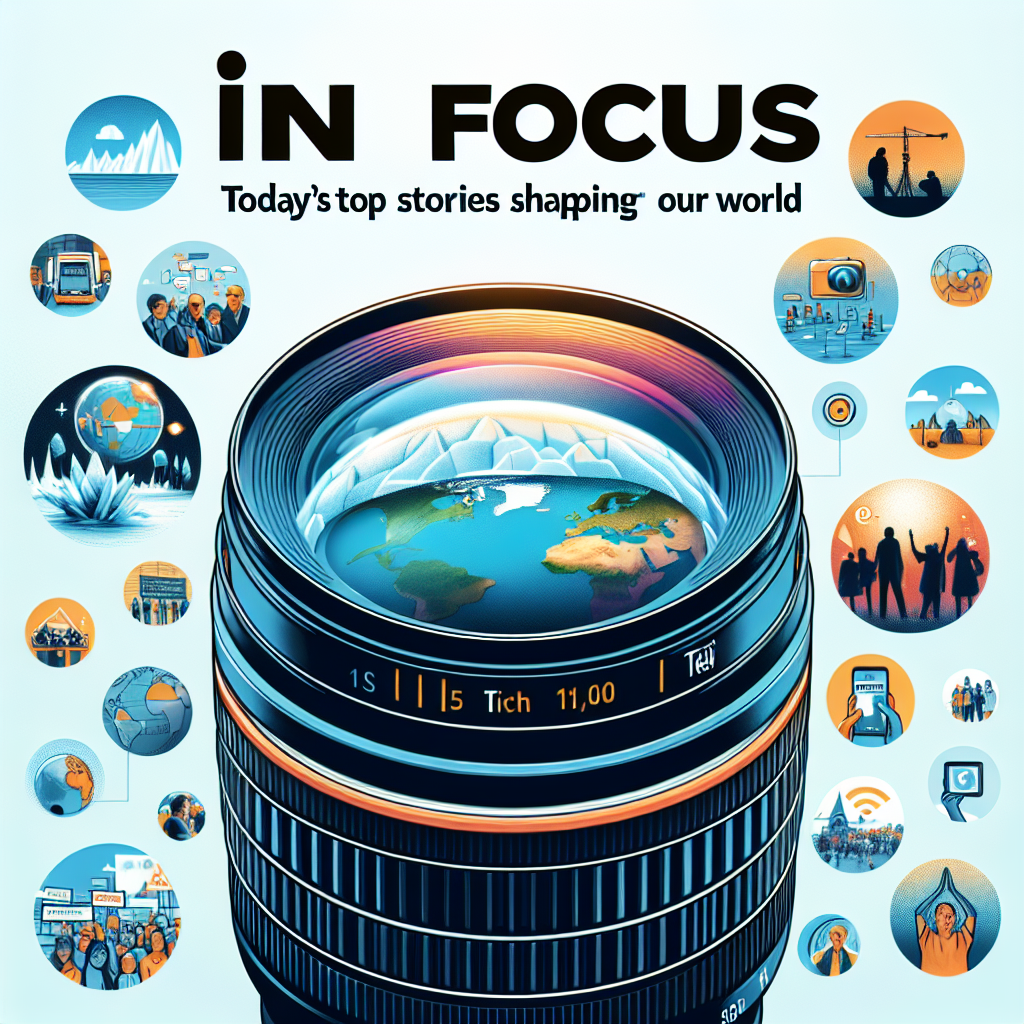Top Trends: The Headlines Making Waves Today

Table of Contents
- The Rise of AI and Automation
- Understanding AI Trends
- Applications in Business
- The Future of AI
- Sustainability Initiatives Taking Center Stage
- Growing Consumer Awareness
- Corporate Responsibility
- Innovations in Sustainability
- The Shift in Consumer Behavior
- E-commerce Expansion
- Omnichannel Strategies
- Social Media Influence
- Economic Shifts Impacting Businesses
- Inflation and Its Implications
- Adaptive Pricing Strategies
- The Gig Economy
- Recruiting and Retaining Talent
- Conclusion
In an ever-evolving world, staying abreast of the latest trends is essential for entrepreneurs, marketers, and business owners. In this article, we’ll explore the top trends making headlines today, focusing on technology, sustainability, consumer behavior, and economic shifts. We aim to provide insights that will help professionals navigate these changes effectively.
The Rise of AI and Automation
Understanding AI Trends
Artificial Intelligence (AI) is no longer a futuristic concept but a current reality influencing various industries. AI tools have become integral in areas like marketing, customer service, and operational efficiency. A survey conducted by McKinsey highlights that organizations adopting AI can expect a 5–10% increase in operational efficiency (source: McKinsey).
Applications in Business
Businesses are leveraging AI for data analysis, predictive analytics, and customer insights. For instance, marketing automation tools employing AI can analyze customer behavior to tailor campaigns in real-time. This shift allows marketers to deliver hyper-personalized content, catering to individual preferences.
The Future of AI
The continued integration of AI into everyday business operations is expected to grow. According to Gartner, by 2025, 80% of emerging technologies will be based on AI (source: Gartner). Companies that invest now will likely see substantial benefits in the long term.
Sustainability Initiatives Taking Center Stage
Growing Consumer Awareness
Sustainability is not just a buzzword; it’s a necessity. Today’s consumers are increasingly aware of the environmental impact of their choices. A 2021 survey found that 75% of Gen Z consumers are willing to pay more for sustainable products (source: Nielsen). This shift in consumer behavior is prompting businesses to adopt sustainable practices.
Corporate Responsibility
Several companies are committing to net-zero carbon emissions and reducing waste. Brands like Unilever and Patagonia are leading the way by implementing eco-friendly practices across their supply chains. These initiatives not only cater to consumer demands but also foster brand loyalty.
Innovations in Sustainability
Innovative technologies are also emerging to support sustainability. Startups are focusing on renewable energy solutions, such as solar and wind energy, that can reduce carbon footprints. Additionally, businesses are now utilizing sustainable materials in product development, paving the way for a circular economy.
The Shift in Consumer Behavior
E-commerce Expansion
The pandemic has accelerated the growth of e-commerce, reshaping how consumers shop. A report by Statista projects that global e-commerce sales will reach $6.54 trillion by 2022 (source: Statista). This rapid expansion presents opportunities and challenges for traditional retailers.
Omnichannel Strategies
Businesses must adopt omnichannel strategies to meet consumers where they are. This means integrating online and offline experiences, providing seamless service regardless of the channel. Companies like Walmart and Target are effectively utilizing this approach to enhance customer experience.
Social Media Influence
Social media is serving as a powerful marketing tool, influencing purchasing decisions. Platforms like Instagram and TikTok allow brands to engage consumers through compelling content and authentic interactions. According to a study by Hootsuite, 54% of social media users have made a purchase based on the platform’s recommendations (source: Hootsuite).
Economic Shifts Impacting Businesses
Inflation and Its Implications
Inflation rates are rising globally, necessitating strategic adjustments for businesses. Higher costs for materials and services can squeeze profit margins, compelling businesses to find ways to cut costs without sacrificing quality.
Adaptive Pricing Strategies
To combat these challenges, adaptive pricing strategies are essential. Dynamic pricing models allow businesses to adjust prices based on real-time market demands. This can help maintain competitiveness and customer satisfaction simultaneously.
The Gig Economy
The gig economy is flourishing, with more professionals seeking freelance or part-time work. The flexibility it offers attracts a diverse workforce, enabling companies to tap into specific skill sets without committing to long-term contracts.
Recruiting and Retaining Talent
The ability to recruit and retain talent has become critical. Employers must focus on creating an appealing work environment, offering benefits that resonate with gig economy workers, such as remote work options and flexible hours.
Conclusion
Staying updated on these trends is crucial for entrepreneurs and marketers alike. Whether it’s leveraging AI to enhance operational efficiency, adopting sustainable practices to meet consumer demand, or adjusting strategies to cope with economic shifts, understanding these trends allows businesses to thrive in a competitive landscape.
For more in-depth insights and strategies on these topics, check out our articles on how to implement effective AI strategies and sustainable marketing practices. By staying informed, businesses can adapt and succeed in a rapidly changing world.
This article provides a comprehensive overview of current trends impacting various sectors. By continuously exploring these developments, businesses can ensure they remain competitive and responsive to the needs of their customers.
Latest Posts
Lorem ipsum dolor sit amet, consectetur adipiscing elit. Ut elit tellus, luctus nec ullamcorper mattis, pulvinar dapibus leo.



















No Comments